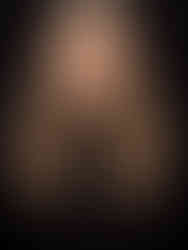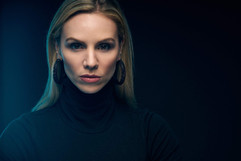
Capturing Emotion Through Light: Exploring the 5 Patterns of Portrait Photography
- Jeff Carpenter

- Jan 10, 2024
- 2 min read
Creating captivating portraits requires more than just framing and clicking a camera shutter. One crucial element that significantly influences the outcome is the use of light. In the realm of portrait photography, mastering various light patterns can elevate your images from ordinary to extraordinary. In this blog post, we'll explore five engaging light patterns that can transform your portraits into visually stunning works of art.
Flat Lighting: Flat lighting offers a soft and even illumination across the subject's face. Achieved by positioning the key light directly in front and at eye level, this pattern minimizes shadows, providing a gentle and flattering look. Flat lighting is ideal for reducing the appearance of imperfections and creating a more straightforward, approachable feel in your portraits. I love using flat light for volume headshots where a lot of different people will be stepping in front of my camera during the same shoot. This minimizes the the need to constantly move the light around depending on your subject.
Butterfly Lighting: Named for the distinctive shadow pattern it creates under the subject's nose, butterfly lighting is often associated with glamorous and high-fashion portraits. Achieved by placing the key light directly in front and slightly above the subject, this pattern casts a symmetrical shadow beneath the nose, resembling the wings of a butterfly. Also known as Paramount lighting, this pattern is a popular choice for highlighting facial features and creating a flattering, polished look.
Loop Lighting: Loop lighting is a versatile and flattering option that works well for a variety of subjects. In this setup, the key light is positioned at a 45-degree angle to the subject, introducing a subtle loop-shaped shadow on the opposite cheek. This pattern is known for its ability to gently highlight the subject's features, creating a soft and appealing look that works wonders for a broad range of portrait styles.
Rembrandt Lighting: Named after the renowned Dutch painter, Rembrandt lighting is a classic technique that brings depth and drama to portraits. Achieved by placing the key light at a 45-degree angle to the subject and slightly above eye level, this pattern creates a distinctive triangular highlight on the opposite cheek while leaving the rest of the face partially shadowed. The result is a timeless and elegant look that adds a touch of mystery to your portraits.
Split Lighting: For a bold and striking effect, split lighting is an excellent choice. In this pattern, the key light is positioned at a 90-degree angle to the subject, illuminating only one side of the face while leaving the other side in shadow. This technique emphasizes contrast and can be particularly effective in conveying a sense of mystery or intensity. Split lighting is a powerful tool for creating visually impactful portraits with a touch of edginess.
Mastering diverse light patterns is a crucial aspect of becoming a skilled portrait photographer. Whether you prefer the timeless elegance of Rembrandt lighting, the bold contrast of split lighting, the gentle appeal of loop lighting, the glamour of butterfly lighting, or the simplicity of flat lighting, each pattern offers a unique opportunity to express your creative vision. Experiment with these techniques, understand how they interact with different subjects and settings, and watch as your portrait photography reaches new heights of sophistication and artistry.





































Comments